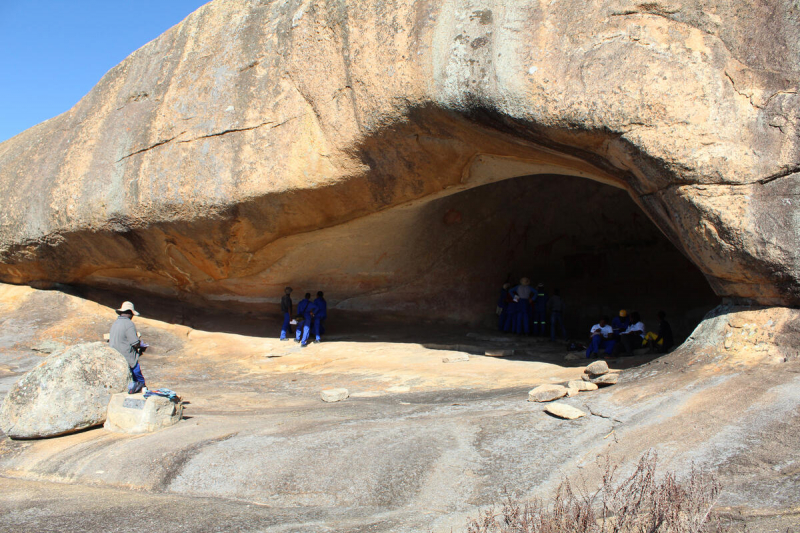Matopos/Matobo Hills
The region has a diverse range of rock features that rise above the granite shield that covers much of Zimbabwe. The enormous rocks provide plentiful natural shelters and have been associated with human settlement from the early Stone Age through early historical times, and on a sporadic basis since then. They have a fantastic collection of rock paintings as well. The Matobo Hills remain a powerful focal point for the local population, which continues to worship at shrines and sacred sites tied to traditional, social, and economic activities. And with the sight stunning, this hill is considered one of the most beautiful historical sites in Zmbabwe.
The Matobo Hills, 35 kilometers south of Bulawayo, are a smattering of unusual granite landforms that rise up to form a sea of hills, densely packed into a comparatively small space. Their shapes are the product of the granite rocks' varying composition and alignment, which responded differently to millions of years of weathering. In both natural and cultural terms, these magnificent granite rock formations have had a tremendous influence on the entire area.
For millennia, people have interacted with and been inspired by the stunning natural rock formations of the Matobo Hills. This interaction has resulted in one of Southern Africa's most impressive rock art collections, as well as strong religious beliefs that continue to play an important role in contemporary local society. It also demonstrates an almost continuous relationship between man and his environment over the past 100,000 years.
The Matobo Hills are home to one of the most extensive collections of rock art in Southern Africa, dating back at least 13,000 years. The paintings also show how artistic techniques and social religious views have changed over time. The entire bear bears witness to a rich cultural past that has since vanished. The abundance of evidence from archaeology and rock paintings at Matobo indicates that the Matobo Hills have been inhabited for at least 500,000 years. Furthermore, this data paints a complete picture of foraging cultures in the Stone Age, as well as how agricultural societies eventually displaced them in the Iron Age.
The Mwari religion, which is still practiced in the area and may originate from the Iron Age, is Southern Africa's most potent oracular tradition. The Matobo cliffs are thought to be the home of gods and ancestral spirits. Within the hills, there are sacred sites where one can make contact with the spiritual world. The shrines' living traditions constitute one of Southern Africa's most strong intangible traditions, and one that could be said to have universal importance. This is a collective rather than an individual response to a landscape. Matobo's natural attributes, such as the strength of the rocks and the produce of the surrounding natural environment, have deep cultural connections.
Location: Matobo (district), Zimbabwe







